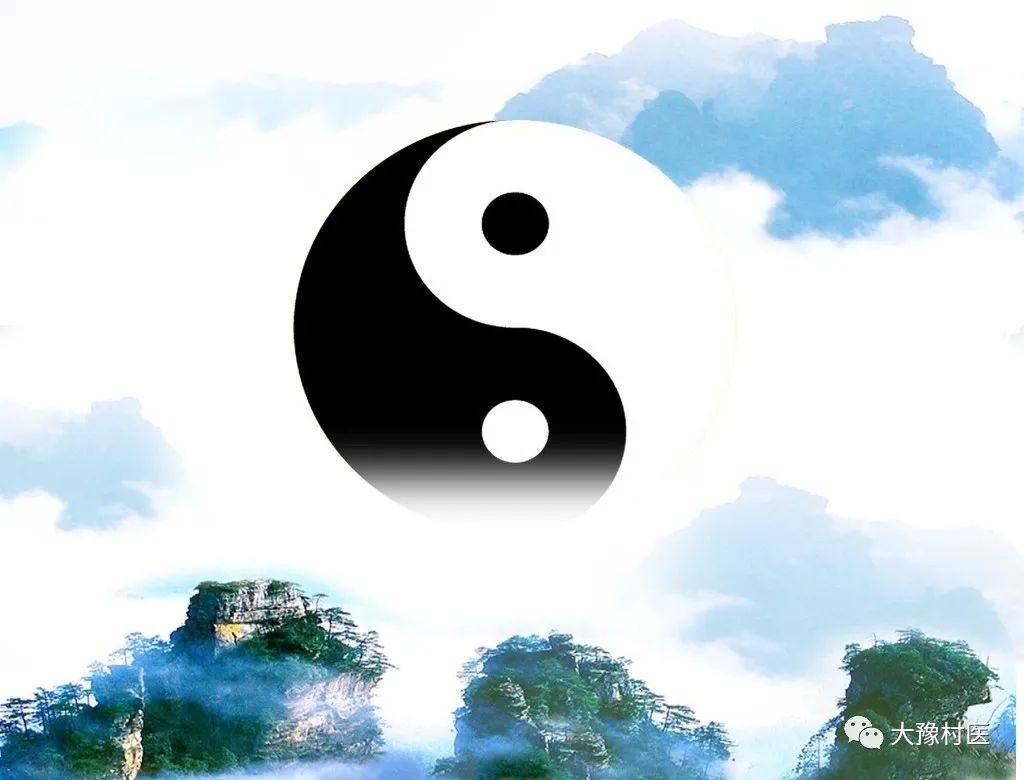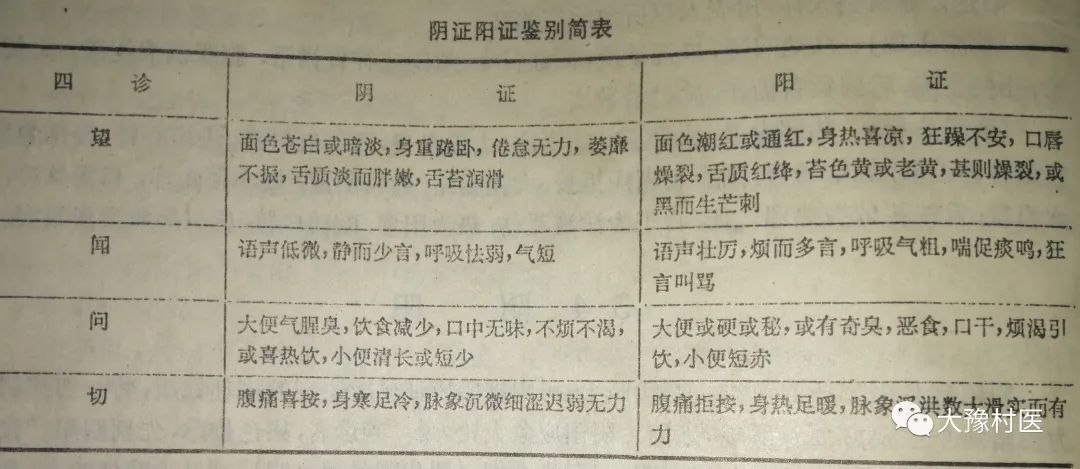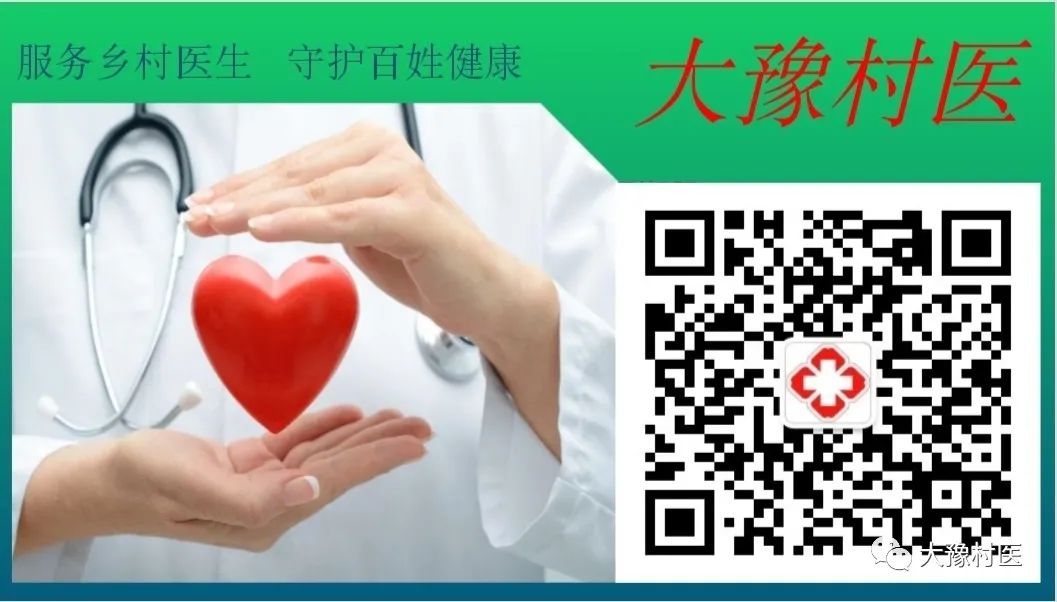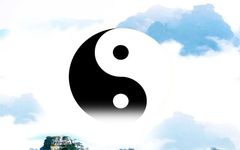Four, Yin and Yang

Yin and Yang are the overarching principles of the Eight Principles of Diagnosis. In diagnosis, all diseases can be divided into two main aspects, Yin and Yang, based on the pathological nature of the clinical symptoms. Therefore, the “Su Wen: On the Correspondence of Yin and Yang” states: “A good diagnostician observes color and pulses, first distinguishing between Yin and Yang.” Zhang Zhongjing classified febrile diseases into Yin and Yang patterns, with the three Yin and three Yang as the overarching principles. The Ming dynasty physician Zhang Jingyue also emphasized: “In pulse diagnosis and treatment, one must first examine Yin and Yang, which is the guiding principle of medicine.” Yin and Yang are the overarching principles of the Eight Principles of Diagnosis, encompassing the other six aspects, hence some refer to the Eight Principles as “Two Principles and Six Essentials.” This highlights the significant role of Yin-Yang differentiation in disease diagnosis.
1. Yin Patterns and Yang Patterns
Patterns have Yin and Yang, with different causes and manifestations. The “Su Wen: On the Correspondence of Yin and Yang” states: “When Yin prevails, Yang suffers; when Yang prevails, Yin suffers.” The “Treatise on Regulating the Menstrual Cycle” states: “Yin deficiency leads to internal heat, Yang deficiency leads to external cold; Yang excess leads to external heat, Yin excess leads to internal cold.” The “Essentials of Pulse Diagnosis” states: “Excess Yang leads to body heat without sweating; excess Yin leads to sweating with body cold.” The “Treatise on Febrile Diseases” also states: “Fever with aversion to cold is due to Yang; absence of fever with aversion to cold is due to Yin.”
1.1 Yin Patterns
Any pattern that conforms to the general attributes of “Yin” is termed a Yin pattern. For example, interior patterns, cold patterns, and deficiency patterns can generally be classified as Yin patterns.
[Clinical Manifestations] Different diseases exhibit varying Yin symptoms, with different emphases. Commonly observed symptoms include: dull complexion, lethargy, heavy body curled up, cold limbs, fatigue and weakness, low and timid voice, poor appetite, bland mouth with no thirst, foul-smelling stools, clear and frequent urination, pale and swollen tongue, and a deep, slow, or weak and thin pulse.
[Pattern Analysis]: Lethargy, fatigue, and low voice are manifestations of deficiency patterns. Cold limbs, bland mouth with no thirst, foul-smelling stools, and clear and frequent urination are manifestations of interior cold patterns. A pale, swollen tongue, and a deep, slow or weak, thin pulse are indicative of deficiency or cold deficiency.
1.2 Yang Patterns
Any pattern that conforms to the general attributes of “Yang” is termed a Yang pattern. For example, exterior patterns, heat patterns, and excess patterns can generally be classified as Yang patterns.
[Clinical Manifestations] Different diseases exhibit varying Yang symptoms, with different emphases. Commonly observed symptoms include: flushed complexion, fever, burning skin, irritability, restlessness, coarse or loud voice, rough breathing, wheezing with phlegm, dry mouth with thirst, constipation, or foul-smelling stools, dark and scanty urination, red tongue with yellow or black coating, and a floating, rapid, or forceful pulse.
[Pattern Analysis] Yang patterns encompass exterior, excess, and heat patterns, characterized by simultaneous aversion to cold and fever. A flushed complexion, irritability, burning skin, and dry mouth with thirst are manifestations of heat patterns. A coarse voice, rough breathing, wheezing with phlegm, and constipation are manifestations of excess patterns. A red tongue with yellow or black coating, and a rapid, forceful pulse are indicative of excess heat.
1.3 Key Points for Differentiating Yin and Yang Patterns
The differentiation between Yin and Yang patterns is summarized in the following table based on the four examinations:

The interplay of Yin and Yang is relative; when Yang is excessive, Yin is deficient, and when Yin is excessive, Yang is deficient. The treatment method is to achieve balance between Yin and Yang. For example, if the pulse is forceful, the tongue is red and dry, accompanied by symptoms of thirst and high fever, it indicates excess Yang and deficient Yin, thus one should suppress Yang and nourish Yin; if the pulse is deep and slow, the tongue is pale and moist, accompanied by abdominal pain and diarrhea, it indicates excess Yin and deficient Yang, thus one should warm Yang and restrain Yin. However, some diseases may only have Yin deficiency without Yang excess, or only Yang excess without Yin deficiency; treating either the Yin deficiency or the Yang excess can restore balance between Yin and Yang. For instance, in cases of tidal fever, if the pulse is thin and rapid, the tongue is red and dry with little coating, accompanied by symptoms of flushed cheeks, red lips, five hearts heat, cough, and night sweats, it indicates Yin deficiency with tidal fever, and the treatment should nourish Yin, which also restrains Yang; if the pulse is deep and forceful, the tongue coating is yellow and dry with prickles, accompanied by symptoms of irritability, shortness of breath, constipation, and delirium, it indicates Yang excess with tidal fever, and the treatment should suppress Yang, which also preserves Yin.
Furthermore, the complex changes of Yin and Yang manifest specifically in the six principles of exterior-interior, cold-heat, deficiency-excess, etc., which will not be repeated here.
2. True Yin Deficiency and True Yang Deficiency
True Yin deficiency and true Yang deficiency refer to kidney Yin deficiency and kidney Yang deficiency. The kidneys are the foundation of congenital essence, and their deficiency or excess relates to the patient’s constitution. If the congenital endowment is insufficient, both kidney Yin and Yang may be weak, and due to different pathogenic conditions, symptoms of true Yin deficiency or true Yang deficiency may manifest.
True Yin Deficiency: Symptoms include: internal heat, pale complexion with red cheeks, lips like painted red, dry mouth, dry red tongue without coating, dry throat with irritability, dizziness, tinnitus, weakness and soreness in the lower back and legs, night sweats, nightmares, constipation, and hot palms and soles, with a rapid and weak pulse.
True Yang Deficiency: Symptoms include: pale complexion, pale lips and tongue, moist mouth, shortness of breath, swelling, spontaneous sweating, dizziness, lack of appetite, abdominal distension, edema in the lower limbs, cold body with loose stools, or morning diarrhea, impotence with cold semen, weakness in the lower limbs, and a large but weak pulse.
The pulse symptoms of true Yin deficiency and true Yang deficiency are as described above. Shen Jinao also emphasized the pulse characteristics and treatment methods. He stated: “Both Yang deficiency and Yin deficiency belong to the kidneys. Yang deficiency indicates true Yang deficiency in the kidneys, which is true fire. If the fire is deficient, the right pulse will be weak, and one should greatly tonify the true essence, without harming Yin Qi. Yin deficiency indicates true Yin deficiency in the kidneys, which is true water. If the water is deficient, the pulse will be thin and weak, and one should greatly tonify true Yin, without harming Yang Qi.” Shen’s treatment methods focus on true water and true fire, which are fundamentally derived from Wang Taifu’s teachings. Wang once said: “If it is not cold, it is due to lack of water; strengthen the water to control the Yang; if it is not hot, it is due to lack of fire; enhance the fire to dispel Yin shadows.” This assertion provides a clear direction for later generations in treating true Yin deficiency and true Yang deficiency. Zhang Jingyue’s formulas, Left Return and Right Return, also stem from this.
3. Loss of Yin and Loss of Yang
Loss of Yin and loss of Yang are dangerous patterns of disease; if the diagnosis is incorrect or treatment is delayed, death can occur immediately. This generally occurs in cases of high fever with profuse sweating, excessive sweating, excessive vomiting or diarrhea, or excessive blood loss, especially profuse sweating can easily lead to loss of Yin and loss of Yang. Cheng Zhongling in “Medical Insights: On Sweating Methods” stated: “If the pulse at the cun position is weak (Yang deficiency), one should not induce sweating, as sweating will lead to loss of Yang; if the pulse at the chi position is weak (Yin deficiency), one should not induce sweating, as excessive sweating will lead to loss of Yin.” Sweat is Yin fluid, and blood is also Yin fluid; excessive sweating and bleeding will lead to the loss of Yin along with blood and sweat, which is a common principle. Due to the interdependence of Yin and Yang, when Yin fluids are consumed, Yang Qi often loses its support and disperses; thus, the Yang Qi that is lost due to loss of Yin also disperses, and the Yin fluids that are lost due to loss of Yang will also be damaged, but the priority differs, and the treatment methods are distinct.
Here, I record Xu Lingtai’s “On Loss of Yin and Loss of Yang” for reference. Xu stated: “The classics say, ‘If blood is lost, there is no sweat; if sweat is lost, there is no blood.’ Blood belongs to Yin, thus excessive sweating leads to loss of Yin. Therefore, the method to stop sweating must use herbs that cool the heart and restrain the lungs; why? Because the heart governs blood, and sweat is the fluid of the heart, thus it is necessary to clear heart fire; sweat must emerge from the skin, and the lungs govern the skin, thus it is also necessary to restrain lung Qi. This is the correct treatment. However, if sweating is excessive, Yang Qi will be depleted, and the kidney’s dragon thunder fire will rise with the water; if one uses cold to suppress it, the fire will become more intense. Only by using large doses of ginseng and aconite, along with salty and descending herbs, such as children’s urine and oyster, and a cold drink, can it reach the lower jiao, drawing the true Yang down, thus the dragon thunder fire returns to its place and sweating stops. This is vastly different from the sweating due to loss of Yin. Therefore, the treatment methods for loss of Yin and loss of Yang are entirely different, and the timing is crucial. When Yang Qi has not yet moved, use Yin herbs to stop sweating; when Yang Qi has already moved, use Yang herbs to stop sweating, and herbs that astringe such as dragon bone, oyster, astragalus, and five-flavor herbs can be used in both cases as needed. A physician who can distinguish the boundaries between loss of Yin and loss of Yang can use the herbs correctly.” “How to differentiate between loss of Yin and loss of Yang? Loss of Yin sweating presents with heat intolerance, warm hands and feet, warm skin, and the sweat is hot and salty; the patient is thirsty and prefers cool drinks, with coarse breathing and a deep, forceful pulse; this is the evidence. Loss of Yang sweating presents with cold intolerance, cold hands and feet, cold skin, and the sweat is cold and slightly sticky; the patient is not thirsty and prefers warm drinks, with weak breathing and a floating, rapid, and empty pulse; this is the evidence.” In general, the interplay of Yin and Yang is relative. Loss of Yin occurs because Yin deficiency leads to Yang excess, presenting a series of heat signs, but it is ultimately a deficiency pattern, thus the pulse, although appearing forceful, will be weak upon palpation; loss of Yang occurs because Yang deficiency leads to cold, presenting a series of cold signs, with virtual Yang dispersing, thus the pulse appears floating and rapid, and in severe cases, it may be thin and almost absent. Furthermore, at the moment of loss of Yin, the tongue is red and dry; at the moment of loss of Yang, the tongue is pale and moist. This is also something to grasp during diagnosis.

Appendix: Examples of Eight Principles Medical Cases
Case of Yang Pattern resembling Yin Pattern: Li Shicai treated a person who was lethargic, with unbearable pain in the lower back and knees, stating that the kidneys govern the lower back and knees, thus he used cinnamon and aconite. After two months, the patient felt increasingly weak in the limbs, with cold lower back and knees, and thus excessively took warming herbs. Shicai diagnosed the pulse as deep, and upon heavy pressure, it was very strong. He thought it was a Yang pattern resembling Yin, thus excessive heat had transformed into a Yang excess, and the urine was likely red, which the patient confirmed. He then used Huangbai (Phellodendron) 9g, Longdancao (Gentiana) 6g, Qinhua (Scutellaria) 4.5g, Lianhua (Lotus) 4.5g, and Zhi (Gardenia) 4.5g, adding 7 slices of ginger as a guide, and had the patient drink it hot. Soon, the patient felt relief in the lower back, and after three doses, the pain was completely gone. …《Ancient and Modern Medical Cases》
Case of Yin Excess Counteracting Yang: Upper heat and lower cold: Rui Ziyu suffered from a febrile disease, presenting with Yin excess counteracting Yang, flushed face, curled toes, restlessness, and diarrhea. There were differing opinions on whether to treat with cold or warmth, and it was difficult to decide. Chang Yuanying used Ziyue Guizhi Decoction, while Xu used ice-soaked licorice and dried ginger decoction, both resulting in recovery. He advised: “Diarrhea with curled toes indicates a four-reverse pattern. If one uses the usual method, the heat in the upper jiao will worsen. Now, using Ziyue to counteract it and guiding with warm and sweet herbs, this heat is due to cold treatment.” Those who heard it all expressed admiration.《Ancient and Modern Medical Cases》
Case of Exterior Excess and Interior Deficiency: Gong Yunlin treated a person who, in summer, due to overwork, irregular diet, and cold drinks, fell ill. The physician treated it as a seasonal disease but it did not improve. After ten days, the patient felt heavy in the body, cold in the limbs, had clear diarrhea, and covered himself with clothing, finding it hard to breathe, and was reluctant to speak. This indicated that the spleen was affected by cold dampness, leading to insufficient middle Qi. The patient had a dry mouth but only wanted to rinse with water, not swallow; in the morning, the body was cool with a grainy feeling, and in the afternoon, he was irritable and did not want to remove clothing, feeling drowsy with a flushed face, and faint red spots appeared on the skin. This indicated exterior excess and interior deficiency, thus the internal deficiency led to external symptoms changing with time. He then used Qian’s Bai Shui San with Shengma, combined with the original formula of Kudzu and licorice to resolve the spots, adding Bai Zhu (Atractylodes) and Fu Ling (Poria) to eliminate dampness and promote urination, and Ren Shen (Ginseng), Huo Xiang (Agastache), and Mu Xiang (Saussurea) to calm the spleen and stomach, and improve diet. After two doses, the spots receded, and the body temperature normalized, and urination stopped. The next doses of Wu Wei Yi Gong San and Zhong Zhong Decoction were given, and after five days, the patient recovered.《Ancient and Modern Medical Cases》
Case of Half Exterior Half Interior: Sun Zhao treated a person who had suffered from a febrile disease for five or six days, with sweating from the head but no sweating below the neck, cold hands and feet, a feeling of fullness and heaviness in the chest, and constipation, with a tight and deep pulse. Some thought it was Yin obstruction. Sun said: “This is what Zhang Zhongjing referred to as half in the exterior and half in the interior; although the pulse is tight and deep, it should not be considered a Shaoyin disease.” He prescribed Xiao Chai Hu Decoction, and the patient recovered. Although the limbs were cold and the pulse was tight and deep, it seemed like Shaoyin; however, Shaoyin often leads to diarrhea, and should not present with hard stools. Moreover, the head is where the three Yang channels converge; if it were the three Yin channels, it would return to the chest; now, with sweating from the head, it indicates that it is not Shaoyin. Thus, he used Xiao Chai Hu Decoction, and if it were not effective, it would be a large Chai Hu Decoction. This is also a case of Yang pattern resembling Yin.《Ancient and Modern Medical Cases》
Case of False Heat and True Cold: Wang Haizang treated a patient with a pulse that was extremely deep and thin, with internal cold and external heat, and spots appeared on the shoulders and back. The patient was speaking erratically. Some said: “The spots and erratic speech indicate heat, right?” Wang said: “No. Yang is being suppressed by Yin, rising to the lungs, and transmitted to the skin, hence the spots appear; the spirit is not coherent, hence the erratic speech, not true delirium.” Although the skin was hot, upon pressing, it felt cold as ice. He used ginger, aconite, and other herbs totaling over twenty taels, inducing a great sweat, and the patient recovered. Later, the patient relapsed, with a deep and slow pulse, and no bowel movement for three or four days. He used Li Zhong Wan, and within three days, the patient passed about half a jin of stool, and the illness was completely resolved. This is not true delirium, but rather a loss of spirit, indicating Yin.《Ancient and Modern Medical Cases》
(2) Yu Jiayan treated Xu Guozhen, who had suffered from a febrile disease for six or seven days, with body heat and red eyes, requesting water but refusing to drink, showing extreme agitation, lying on the ground, unable to find comfort, and demanding to enter a well. A physician urgently treated with Chengqi but was about to administer it. Yu examined the pulse, which was large and chaotic, and upon heavy pressure, it was weak. He said: “This indicates Yang deficiency wanting to collapse, externally showing false heat, with true cold internally. Observing that the patient does not want to swallow water but can still swallow Da Huang (Rhubarb) and Mang Xiao (Mirabilite)? The weather is hot and humid, and there will be heavy rain; this condition can lead to a great sweat, which cannot be saved.” He then used Aconite, dried ginger, each 15g, ginseng 9g, and licorice 6g, decocted and given cold. After taking it, the patient experienced chills and teeth chattering, and with heavy blankets, he recovered. He then gave the same prescription again, and the slight sweating and heat subsided, leading to stability.《Ancient and Modern Medical Cases》
(3) Xue Lizhai once treated Wang Yidao, whose vital energy was weak, and after excessive study and labor during winter, developed a high fever, with tears and a dry chest, heavy breathing, a large and forceful pulse, and a dry tongue like a thorn. This indicated true cold internally and false heat externally. He prescribed Shi Quan Da Bu Tang. He instructed: “After taking this medicine, the pulse should converge for the better.” Shortly after, the patient fell into a deep sleep, feeling increased chills and needing more clothing, and the pulse became thin like a thread. This is the true manifestation of virtual cold. He then used ginseng 30g, cooked aconite 6g, decocted and taken immediately, leading to recovery. At night, the pulse again became weak, and he used 60g of ginseng and 15g of cooked aconite, leading to recovery. Later, he used large doses of ginseng, Atractylodes, Rehmannia, and roasted licorice to regulate and recover.《Ancient and Modern Medical Cases》
Case of False Deficiency and True Deficiency: Li Shicai treated Han Maoyuan, who had suffered from a febrile disease for nine days, unable to speak, unable to see, unable to move, with cold limbs, all indicating a Yin pattern. Shicai examined the six pulses, all absent. He pressed the abdomen with both hands, furrowing his brow. Upon pressing the foot Yang pulse, it was large and forceful. He realized that there was dry stool in the abdomen. He used Da Chengqi Tang, and six or seven pieces of dry stool were expelled, and the patient could speak and move again. Thus, pressing the hands without reaching the feet: how to save this critical condition?《Ancient and Modern Medical Cases》.

Yang Wenjie, Physician (Editor) Email: [email protected]

